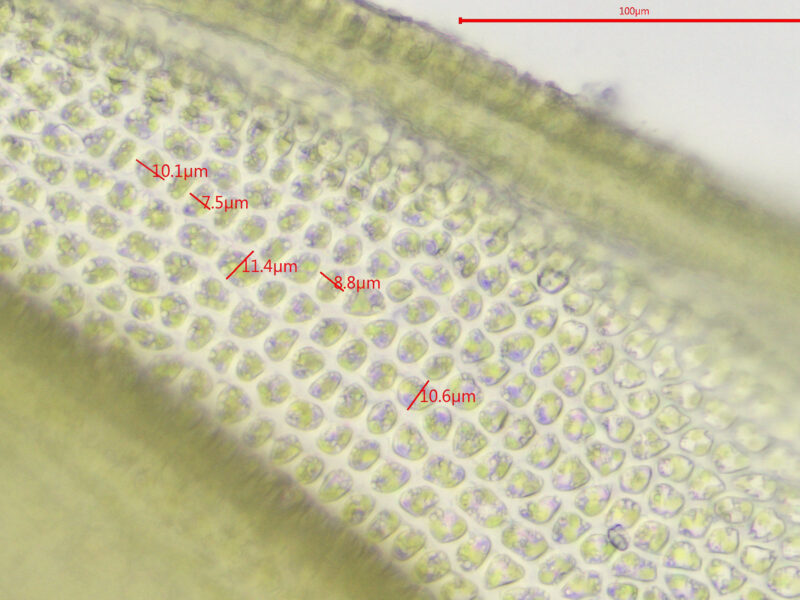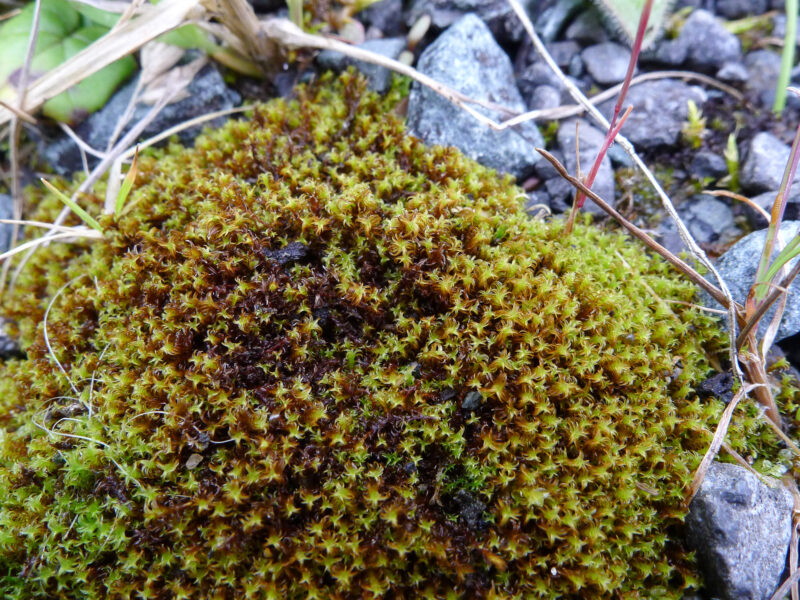Identification notes
This is by no means as common a species as some people think and it is probably over-recorded. D. fallax prefers dry, lime-rich ground where it is not frequently disturbed, so it’s more a species of limestone grassland or little-used tracks than D. insulanus, with which it is sometimes confused.
It has a certain look when growing typically: often brown-tinted plants with keeled stem leaves that are distinctly recurved and quite wide (for a Didymodon!). Sometimes however the uppermost leaves look like they spiral in the same way as typical forms of D. insulanus and then more detective work is needed.
A useful character that is not emphasised enough in the books is the distinctive way the leaves of D. fallax twist slightly and hug the stem when the plants are dry, bringing to mind a section of chain-link fencing. In contrast, dry D. insulanus is a messy-looking plant, as its leaves twist and curl in various directions. Often, by the time you get your Didymodon home, it will have dried out enough to make a provisional identification. If your plants have capsules then they are much more likely to be D. fallax than D. insulanus, which rarely produces them in our islands.
Read the Field Guide account




















